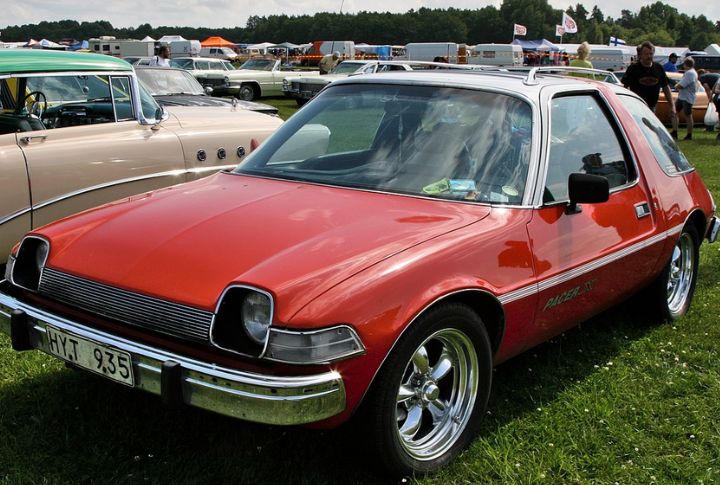
Some classics build huge expectations long before anyone looks at a price tag, and that gap between reputation and reality often catches buyers by surprise. Prestige badges and sharp design cues set an image that fades once true values come into view. The examples ahead show how wide that gap can be, so move through the list and see which one shifts your perspective the most.
Pontiac Grand Prix
Nobody questions the Grand Prix name, and that’s exactly why this generation throws casual shoppers off. The styling suggests real collector potential, yet fair 1978 models still land in the US $6,100–$9,500 range. This is because the Pontiac, a General Motors brand known for sporty designs, built these cars in huge numbers and avoided meaningful performance upgrades.
Ford Mustang
ConceptCarz, a site that tracks real auction results, lists fair 1973 Mustangs at $325, a figure that surprises anyone who assumes early Mustangs always hold strong value. The redesign introduced the longest and heaviest body in Mustang history, pulling it away from the original pony-car appeal. Plus, most still view these models as entry-level choices rather than serious investments.
Chevrolet Nova (4th Generation)
The fourth-generation Nova struggled from the start. It kept the respected nameplate but lost much of the personality that made earlier models memorable. Chevrolet tried blending fuel-minded engineering with optional V8 power, leaving the car without a firm direction. Even so, Hagerty’s $10,260 sale record shows the name still carries weight.
Ford Bronco (3rd Generation)
Bronco heritage creates an instant expectation of strong vintage value, though this generation proves how quickly assumptions can shift. Independent front suspension softened the rugged character tied to the early models. Therefore, fair examples usually fall between $5,500 and $10,300, a range that shows how limited the nameplate’s pull becomes in this middle chapter.
AMC Pacer

Recognition rarely translates into real value, and the Pacer proves it. “Hemmings” lists many between $3,000 and $5,000, with averages near $5,500, while “Classic.com” still shows low- to mid-five-figure listings that never spark bidding wars. The famous “flying fishbowl” profile gives it character, though not the collector commitment needed for stronger prices.
Cadillac Eldorado
Shoppers often overestimate the value of a 1979–85 Eldorado because the tufted leather interiors, power features, and confident Cadillac styling still look upscale. Standard models, however, usually fall between US$4,500 and $14,000 on “Hemmings,” as aging electronics and costly upkeep discourage collectors from viewing this Generation as a worthwhile long-term classic.
Jaguar XJ6
“ConceptCarz” lists 1974 XJ6s between US $3,750 and $7,342, and “Classic.com” shows early-’70s cars near $7,500, numbers that surprise shoppers who expect a luxury Jaguar to command more. Electrical complexity and corrosion issues undercut that expectation, leaving this elegant sedan far below the strong-value bracket its badge suggests.
Buick Regal (Non-Special Editions)
Buick built the regular Regal on the same platform as the Grand National and GNX, but none of the performance hardware or rarity carried over. That mismatch creates false expectations, because shoppers see the shape and assume it has similar value. In reality, “Classic.com” lists many standard models priced under US$10,000.
Chevrolet Corvette (Late C3)
Many shoppers expect any classic Corvette to sit firmly in the high-value bracket, yet late C3 models fall well short of that image. Base versions from this era often sell for US$10,000–$20,000, mainly because this Generation delivered the weakest performance in Corvette history. Even the 1982 Cross-Fire Injection setup added interest rather than absolute power, which kept long-term collector confidence low.
Chevrolet Monte Carlo SS
Buyers often assume the Monte Carlo SS holds substantial collector value because the badge, styling, and NASCAR ties make it look like a muscle-era survivor. In practice, most examples change hands near US $16,500, while only exceptional cars reach US $30,000–$38,000. Its mild 305-V8 and relaxed 200-R4 automatic keep it outside the serious-collectible category.
